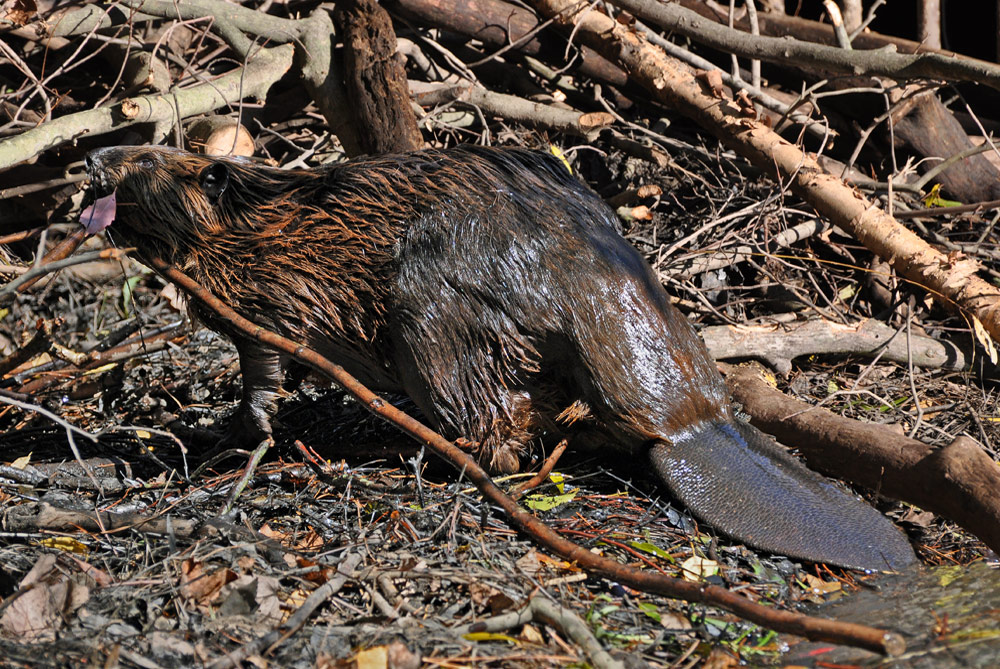Category:
MammalsAbout
Beaver
When settlers were first exploring our country, they were surprised to find large rodents in the ponds and streams. These were our North American Beavers (Castor canadensis).
At about 3 to 4 feet long and weighing up to 86 lbs, the average weight being range 44 to 60 lbs, beavers are our largest native aquatic rodent.
Beavers have webbed hind feet for swimming. Their tails are scaly, large and horizontally flattened. The tail acts as a rudder to help them move and steer through the water. When alarmed, they will give a very loud slap with their tail to warn of danger.
Beavers can be found all over North America. They live in waterways and are mostly aquatic, spending much of their time in freshwater, where they build dams and lodges. These are usually made of sticks, weeds, branches and saplings, all held together by mud.
Lodges are dome-shaped and can be 6 or more feet high and as wide as 40 feet. They have one or more underwater entrances, with the living quarters a hollow area at the top of the lodge. Wood chips are at the base of the living quarters, which are useful for absorbing excess moisture. An air vent brings fresh air inside the lodge. Deciduous trees such as willow, birch, and maple are used for building the lodge.
Beavers are herbivores, eating the leaves, inner bark, shoots and twigs of trees, as well as various types of aquatic vegetation. They will use their sharp incisor teeth to cut down this vegetation.
A good indication that beavers are in an area is the presence of chewed bases of trees near a stream or pond. Beavers will chew at the base of these trees and plants until they are felled. Once felled, the beavers trim the vegetation down to a manageable size, about 1 to 2 inches thick and about 6 feet long. After which, they will carry the wood in their mouths to their preferred dam and lodge site.
Beavers are very persistent in their habits and they will continue to rebuild dams and lodges even after being broken down. These dams and lodges can be quite beneficial in that they can provide habitat for waterfowl and fish, reduce soil erosion and may reduce flooding.
Help pay for my food and care at the Virginia Living Museum by adopting me today.






